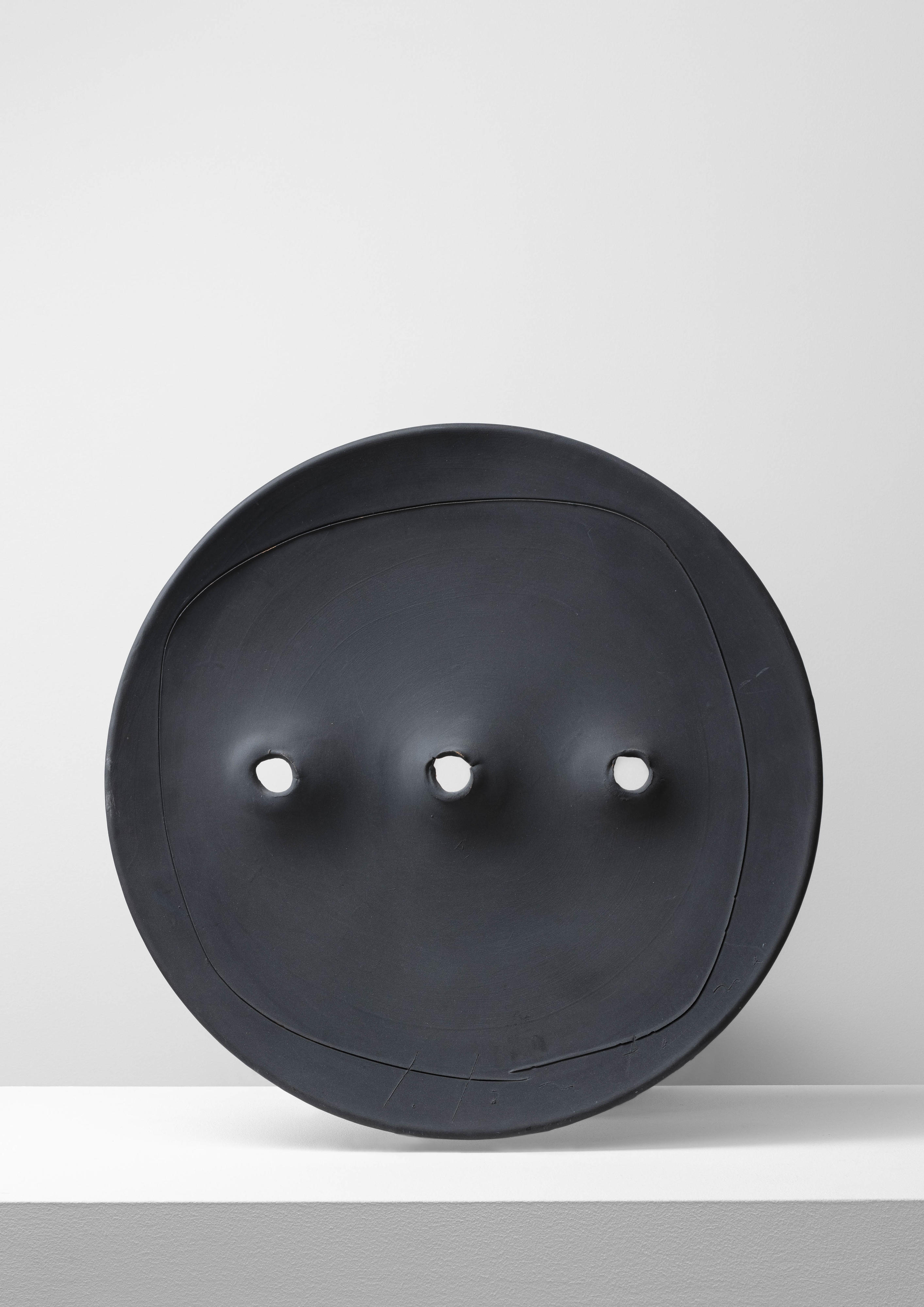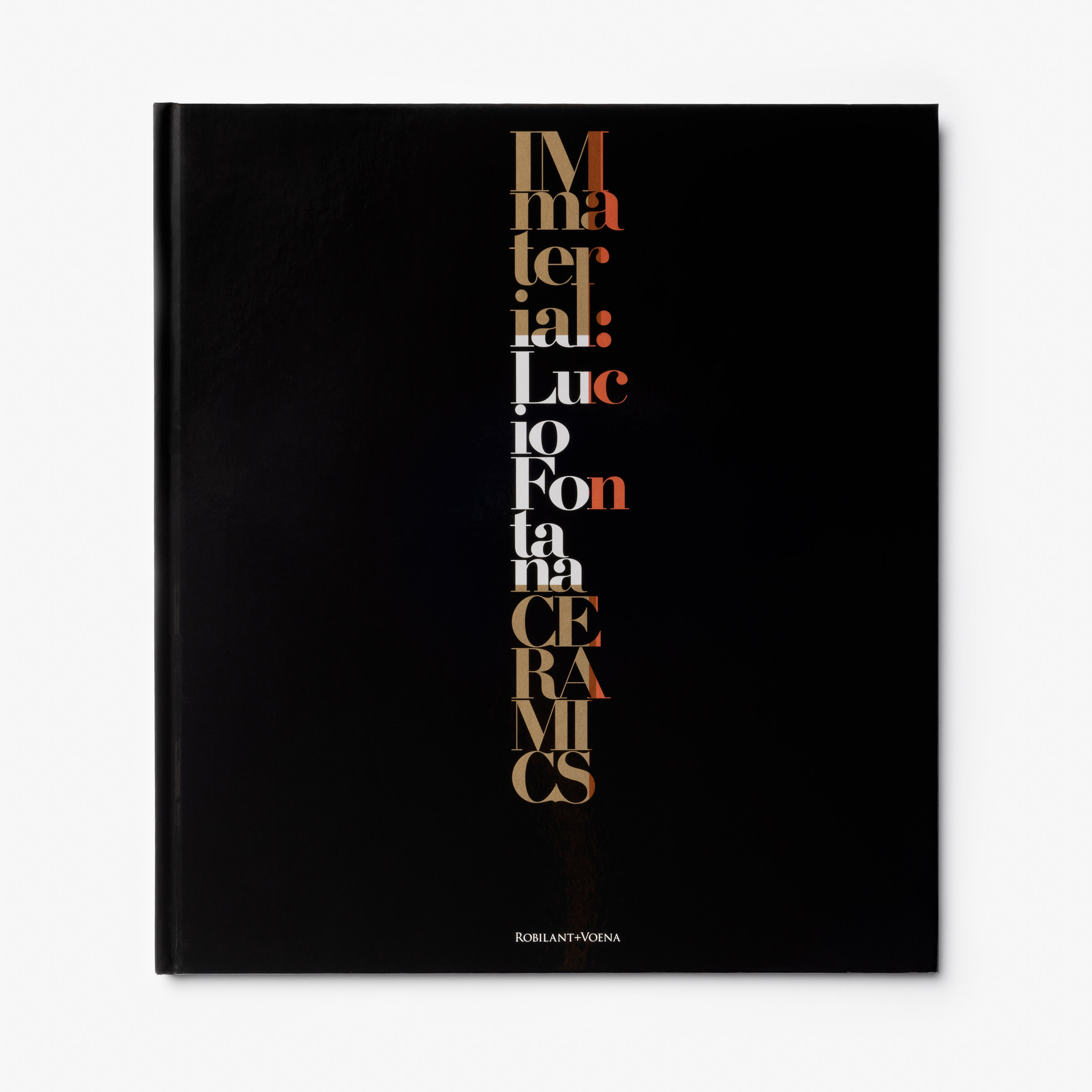Lucio Fontana
b. 1899, Rosario de Santa Fé, Argentina
d. 1968, Comabbio, Italy
Concetto Spaziale (Spatial Concept)
1962–63
Painted terracotta and graffiti
Diameter: 49.7 cm (19 5/8 in.)
Provenance
with Martha Jackson Gallery, New York,
with David Anderson Gallery, New York,
Jerome and Elaine Kurtz, New York, acquired directly from the above in 1981, and until 2016,
Private collection.
Literature
L. M. Barbero (ed.), Lucio Fontana: Catalogo ragionato delle sculture ceramiche, Vol. II, Milan, 2022, p. 511, illustrated, no. 62-63 SPC 6.
Description
Lucio Fontana began to puncture his canvases with holes (or buchi) around 1949, and then repeated the gesture in his ceramic works. In one regard, the holes simply mark the movement of the artist’s hand, much like the brushstroke in Abstract Expressionist painting. Yet for Fontana the perforations were more significant—by literally ripping into the pictorial surface, Fontana opened up the picture plane, the space occupied by the viewer, to the space that lies beyond. Fontana understood this gesture and its result a penetration into the limitless possibilities of a boundless universe, stating “I make a hole…and from there I enter into infinity.” Here, three prominent buchi arranged in a horizontal line puncture the surface of a round ceramic platter painted black. These dramatic gouges perforate the platter completely, revealing the space behind and beyond the surface. They are, furthermore, encircled by an inscribed line which echoes yet does not precisely follow the profile of the platter. Throughout Fontana's oeuvre, such circular and ovoid forms, often organically or biomorphically rendered, signify the birth of a new idea, a new concept of art challenging every fundamental that had come before.






